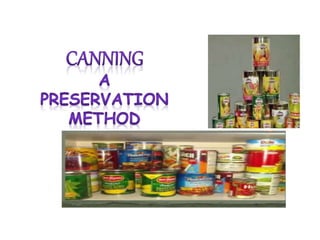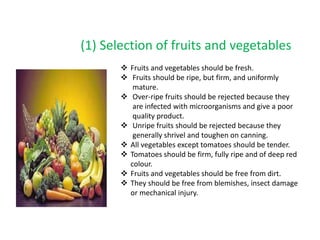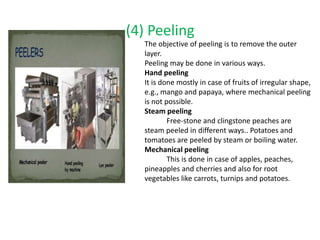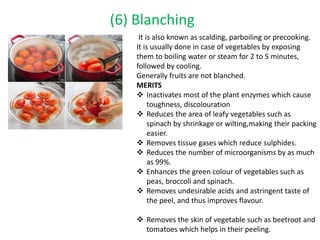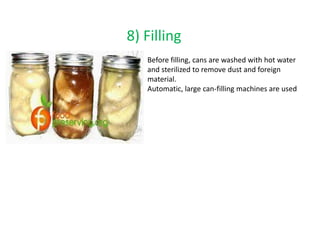Canning is the process of sealing foods in containers and sterilizing them through heat to allow for long storage. It was invented in France in 1804 by Appert and involves selecting high quality fresh fruits and vegetables, washing, cutting, blanching, filling containers, exhausting air, sealing, heat processing, cooling, and storing in a cool, dry place. The multi-step process preserves foods by killing microorganisms and preventing recontamination.
